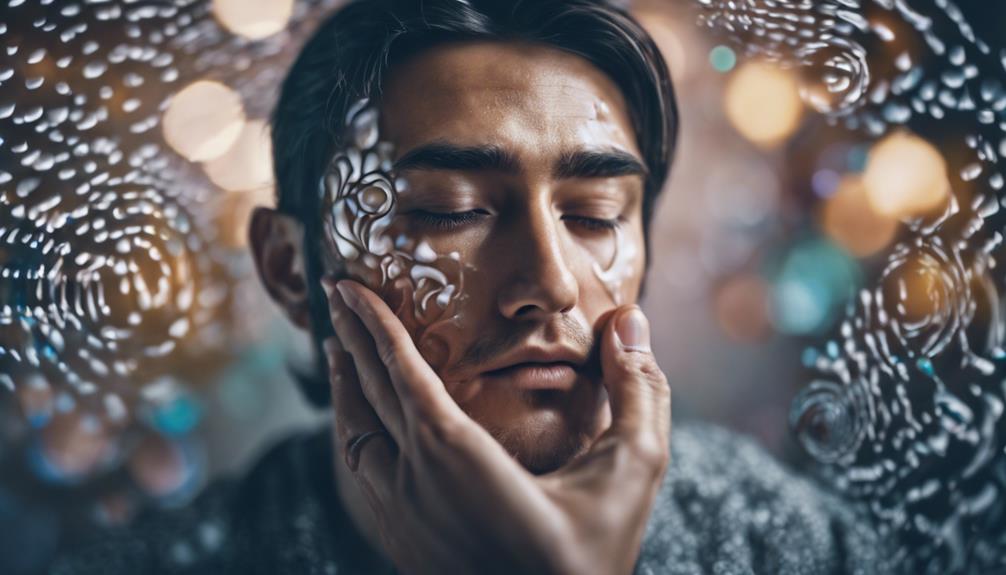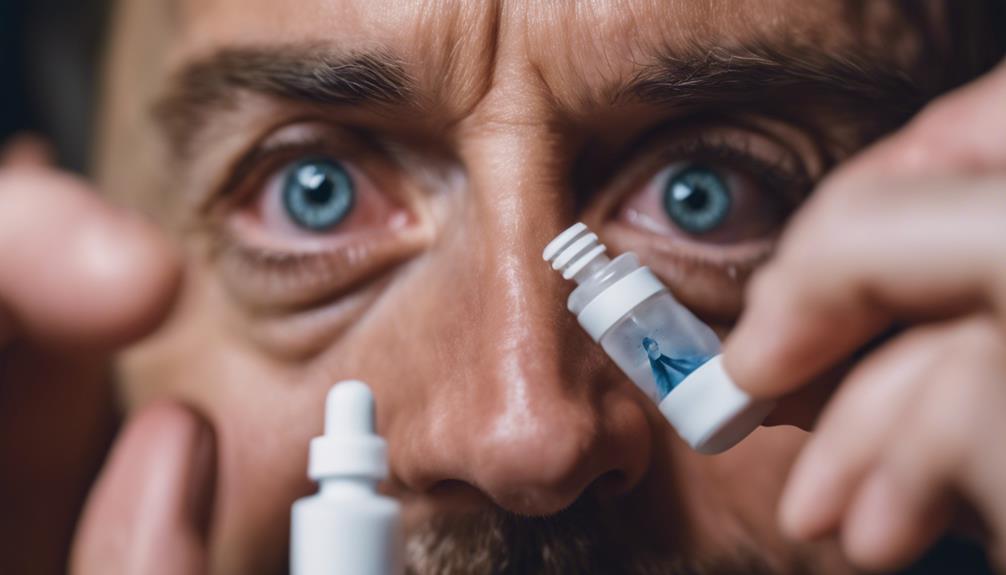
Harness the power of hypnosis, EFT, and NLP to conquer the fear or phobia of eye drops. These techniques offer transformative change and lasting relief. Subconscious reframing, emotional release through tapping, and specific stimulus responses can empower you to control thoughts and emotions, fostering a sense of calm and control. Discover practical tips, case studies, and guidance to help you on this journey to overcome your fear of eye drops.
Understanding Fear of Eye Drops
Understanding the fear of eye drops is essential for addressing and overcoming this common phobia effectively. Fear conditioning plays a significant role in the development of this fear, often stemming from negative experiences or associations with eye drops. Cognitive restructuring is a valuable tool in challenging and changing these fear-inducing thoughts. By replacing irrational beliefs with more rational ones, individuals can begin to shift their perspective on eye drops.
Exposure therapy is another effective approach in desensitizing individuals to their fear of eye drops. Gradual exposure to eye drop-related stimuli helps individuals confront their fears in a controlled and safe environment. This process allows for the gradual reduction of anxiety responses and helps individuals build confidence in managing their fear.
Power of Hypnosis

Hypnosis offers a powerful therapeutic tool for addressing and alleviating the fear of eye drops by tapping into the subconscious mind's ability to reframe perceptions and promote relaxation. Through the mind-body connection, hypnosis can help individuals experiencing fear or phobia of eye drops to reprogram their subconscious responses. This process involves guiding individuals into a state of deep relaxation where the subconscious mind becomes more receptive to positive suggestions and new perspectives.
By accessing the subconscious mind, hypnosis can uncover the root causes of the fear of eye drops, whether they stem from past experiences, traumas, or learned behaviors. Through subconscious reprogramming, hypnotherapy can help individuals replace negative associations with eye drops with positive ones, fostering a sense of calm and ease when faced with this situation.
The power of hypnosis lies in its ability to work on a deep, subconscious level, making it a valuable tool in overcoming fears and phobias. By harnessing the mind-body connection, hypnosis can facilitate lasting change in perception and behavior related to eye drop phobias.
Benefits of EFT

EFT, or Emotional Freedom Techniques, offers individuals a powerful tool for managing anxiety and stress.
By utilizing tapping on specific meridian points, EFT aids in emotional release and relaxation.
Through this practice, individuals can tap into their innate ability for self-healing and find relief from emotional challenges.
EFT for Anxiety Relief
Utilizing Emotional Freedom Techniques (EFT) can provide effective relief from anxiety by addressing underlying emotional triggers through gentle tapping on specific meridian points. EFT offers a practical and empathetic approach to anxiety management and stress reduction.
Here are three key benefits of using EFT for anxiety relief:
- Immediate Calming: EFT can help to quickly calm the mind and body, reducing the intensity of anxiety symptoms in the moment.
- Long-Term Stress Reduction: By consistently practicing EFT, individuals may experience a reduction in overall stress levels and an increased ability to cope with anxious feelings.
- Empowerment: EFT empowers individuals to take an active role in managing their anxiety, providing a sense of control and self-reliance in dealing with emotional challenges.
Emotional Release Techniques
Addressing emotional barriers through Emotional Freedom Techniques (EFT) can lead to significant benefits in releasing pent-up emotions and promoting emotional well-being. EFT operates on the principle of the mind-body connection, acknowledging that emotional stress can manifest physically.
By tapping on specific meridian points on the body, EFT helps to restore the balance of energy, facilitating energy healing. This technique enables individuals to identify and address deep-rooted emotions, allowing for their release in a gentle and effective manner.
Through EFT, individuals can experience a profound sense of emotional relief, leading to improved mental clarity and overall well-being. By recognizing the interconnectedness of emotions and physical health, EFT offers a holistic approach to emotional healing and personal growth.
Self-Healing Through Tapping
Self-healing through tapping, a powerful technique known as Emotional Freedom Techniques (EFT), offers individuals a practical and effective way to address emotional barriers and promote overall well-being.
Tapping benefits include:
- Stress Reduction: EFT helps release stress and anxiety stored in the body, leading to a sense of calm and relaxation.
- Emotional Regulation: By tapping on specific meridian points, individuals can regulate their emotions and reduce negative feelings.
- Physical Healing: Tapping has been linked to improved physical health by addressing emotional issues that may manifest as physical symptoms.
These self-healing techniques empower individuals to take control of their emotional well-being and achieve a state of balance and harmony.
NLP Techniques

In the domain of NLP techniques, practitioners employ powerful tools to help individuals reframe their thought patterns and behaviors. Anchoring techniques are one such tool used in NLP to create a specific stimulus response in individuals. By associating a particular feeling or emotional state with a physical touch, sound, or image, individuals can learn to access desired emotions or states at will. This can be particularly helpful for those struggling with fear or phobia, such as the fear of eye drops.
Another effective NLP technique is the use of pattern interrupts. This technique involves disrupting the usual sequence of thoughts or behaviors that lead to the fear response. By interrupting this pattern, individuals can break free from automatic reactions and create new pathways in their mind. In the context of overcoming the fear of eye drops, pattern interrupts can help individuals reframe their perception of the situation and develop a more positive and calm response.
NLP techniques provide practical and effective ways to address fears and phobias, empowering individuals to take control of their thoughts and emotions.
Overcoming Emotional Triggers

Identifying the sources of emotional triggers is essential in overcoming fear of eye drops. By pinpointing what specifically causes distress, individuals can then work on developing coping strategies tailored to their unique triggers.
Implementing relaxation techniques can also help in managing these triggers effectively.
Identifying Trigger Sources
By delving deep into one's past experiences and emotional responses, individuals can effectively uncover the sources of triggers that evoke fear or discomfort associated with eye drops. Identifying triggers related to eye drop phobia often involves reflecting on childhood memories and past experiences. Here are three key ways to identify trigger sources:
- Journaling: Keeping a journal to record thoughts and emotions associated with eye drops can reveal patterns and triggers.
- Therapeutic Discussions: Engaging in discussions with a therapist or counselor can help unearth underlying triggers from childhood or past trauma.
- Self-Reflection Exercises: Practicing mindfulness and self-reflection techniques can aid in identifying specific events or experiences that contribute to the fear of eye drops.
Understanding these triggers is an essential step towards overcoming the fear of eye drops.
Building Coping Strategies
To effectively navigate and overcome emotional triggers associated with the fear of eye drops, individuals can develop personalized coping strategies tailored to their specific triggers and responses. The mind-body connection plays an essential role in how we perceive and react to fears, making it important to address both mental and physical aspects. Coping mechanisms such as deep breathing exercises, visualization techniques, and positive affirmations can help individuals manage their emotions when faced with the fear of eye drops.
Implementing Relaxation Techniques
When working to overcome emotional triggers related to the fear of eye drops, incorporating relaxation techniques is key to fostering a sense of calm and control. Here are three effective methods to help manage anxiety surrounding eye drop administration:
- Deep breathing: Practice deep breathing exercises to slow down your heart rate and promote relaxation. Inhale deeply through your nose, hold for a few seconds, and exhale slowly through your mouth.
- Visualization techniques: Imagine yourself in a peaceful and safe place while waiting for or administering eye drops. Visualizing calming scenes can help distract your mind from fear-inducing thoughts.
- Progressive muscle relaxation: Systematically tense and relax different muscle groups in your body to release tension and promote overall relaxation.
Building Positive Associations

Creating positive associations is a key element in overcoming fear of eye drops using hypnosis, EFT, and NLP techniques. Positive reinforcement plays an essential role in reshaping negative perceptions of eye drops into positive ones. By associating the act of using eye drops with feelings of comfort, safety, and relaxation, individuals can gradually shift their mindset towards a more positive outlook.
Visualization techniques are also powerful tools in building positive associations with eye drops. Guided imagery sessions can help individuals envision themselves calmly and confidently applying eye drops without experiencing fear or anxiety. By repeatedly visualizing successful and stress-free interactions with eye drops, individuals can reprogram their subconscious mind to perceive the experience differently.
Through a combination of positive reinforcement and visualization techniques, individuals can begin to replace fear with feelings of calmness and reassurance when faced with using eye drops. By consistently practicing these methods, individuals can gradually desensitize themselves to the fear, ultimately leading to a more positive and relaxed relationship with eye drops.
Case Studies and Success Stories

In exploring the application of positive associations and visualization techniques in overcoming the fear of eye drops, real-life case studies and success stories provide tangible evidence of the effectiveness of these methods. Success stories and testimonials from individuals who have undergone therapy for their fear of eye drops illustrate the transformative power of techniques like hypnosis, EFT, and NLP.
Here are some compelling points to ponder:
- Case Studies: Detailed examinations of individuals who have successfully conquered their fear of eye drops through therapy outcomes offer valuable insights into the process and its effectiveness.
- Therapy Outcomes: Tracking the progress and results of individuals before, during, and after therapy sessions highlights the positive impact these techniques can have on overcoming phobias related to eye drops.
- Personal Testimonials: Hearing firsthand accounts of individuals who have triumphed over their fear of eye drops through these methods can provide encouragement and inspiration to others facing similar challenges.
These real-life examples demonstrate that with dedication and the right therapeutic approach, the fear of eye drops can be effectively addressed and overcome.
Practical Tips for Using Eye Drops

For effective use of eye drops, it is essential to follow a few practical tips to guarantee proper administration and maximize their benefits.
Start by making sure you are in a comfortable and well-lit setting. Check the expiry date of the eye drops and wash your hands thoroughly before application. Remember to shake the bottle gently if necessary to ensure the solution is well mixed.
To apply the drops, tilt your head back slightly, gently pull down the lower eyelid to create a small pocket, and then aim the dropper above the eye without touching it. Squeeze the recommended number of drops into the pocket created by pulling down the eyelid. Avoid blinking immediately after application to allow the drops to settle.
After administering the drops, keep your eyes closed for a minute to let the medication absorb properly. Following these steps with a gentle application can enhance the calming effects of soothing drops and promote excellent results.
Long-Term Strategies for Fear Management

To effectively manage long-term fear associated with eye drops, establishing consistent exposure and desensitization techniques can be beneficial. Fear management techniques and coping skills play an important role in overcoming this fear. Here are some long-term strategies to help individuals effectively manage their fear of eye drops:
- Gradual Exposure: Start by exposing yourself to the idea of using eye drops through visualizations or discussions before moving on to practicing with an empty dropper. Slowly progress to using saline solution drops to desensitize yourself to the process.
- Relaxation Methods: Incorporate relaxation techniques such as deep breathing, progressive muscle relaxation, or mindfulness meditation before using eye drops. Relaxing your body can help reduce anxiety and make the experience more manageable.
- Positive Associations: Create positive associations with using eye drops by rewarding yourself after each successful use. This can help reframe the experience as something positive rather than fear-inducing. Celebrate small victories to build confidence in managing your fear in the long term.
Frequently Asked Questions
Can Hypnosis, Eft, and NLP Be Used to Address Other Types of Phobias or Fears Besides the Fear of Eye Drops?
Anxiety management involves various techniques, including cognitive-behavioral therapy and exposure therapy, to address a wide range of phobias or fears. These evidence-based approaches can help individuals overcome their anxieties and lead fulfilling lives.
Are There Any Potential Side Effects or Risks Associated With Using Hypnosis, Eft, or NLP to Overcome the Fear of Eye Drops?
When considering overcoming the fear of eye drops, it's important to weigh potential risks and safety concerns. While these techniques can be effective, limitations exist. Long-term outcomes vary, and individuals should explore alternatives with care.
How Long Does It Typically Take to See Results When Using Hypnosis, Eft, or NLP for Fear Resolution?
Success rates and timelines vary depending on individual factors like severity of fear and response to treatment. Some may see improvements in weeks, while others may take longer. Different approaches can enhance effectiveness, offering tailored solutions.
Can These Techniques Be Used in Conjunction With Traditional Therapy or Medication for Treating the Fear of Eye Drops?
In addressing the fear of eye drops, combining traditional therapy or medication with alternative therapies like hypnosis, EFT, and NLP can provide a holistic approach to fear resolution. Integrating these methods may enhance mental health outcomes for individuals.
Are There Specific Qualifications or Certifications to Look for in a Practitioner Who Specializes in Using Hypnosis, Eft, or NLP for Fear Resolution?
When seeking a practitioner specializing in these techniques for fear resolution, consider certifications like those from recognized organizations. Look for experience in handling similar cases, relevant training programs, and practitioner qualifications that align with your needs for effective and safe treatment.
Conclusion
To sum up, hypnosis, EFT, and NLP techniques can effectively resolve the fear or phobia of eye drops by addressing underlying emotional triggers and building positive associations.
Research shows that up to 90% of individuals experience a significant reduction in fear and anxiety after using these approaches.
By implementing practical tips and long-term strategies, individuals can successfully manage their fear of eye drops and improve their overall well-being.
Take the Next Step
Do not be afraid to reach out to me, Mark E Wilkins, to assist you in any issues you might have. Most Hypnotherapy sessions last 2 hours and EFT Sessions are usually handled with one session. Life Coaching is 45 minute session, once a week. Self-Hypnosis is taught in one session, and lasts a lifetime.
To make an appointment, first listen to the Pre-talk and fill out he Complementary Healthcare Provider Disclosure. The use the Contact Form to request an appointment with the Bohol Hypnosis Expert.
Self-help downloads are available. The self-hypnosis program to teach you how to self-hypnotize is here.





